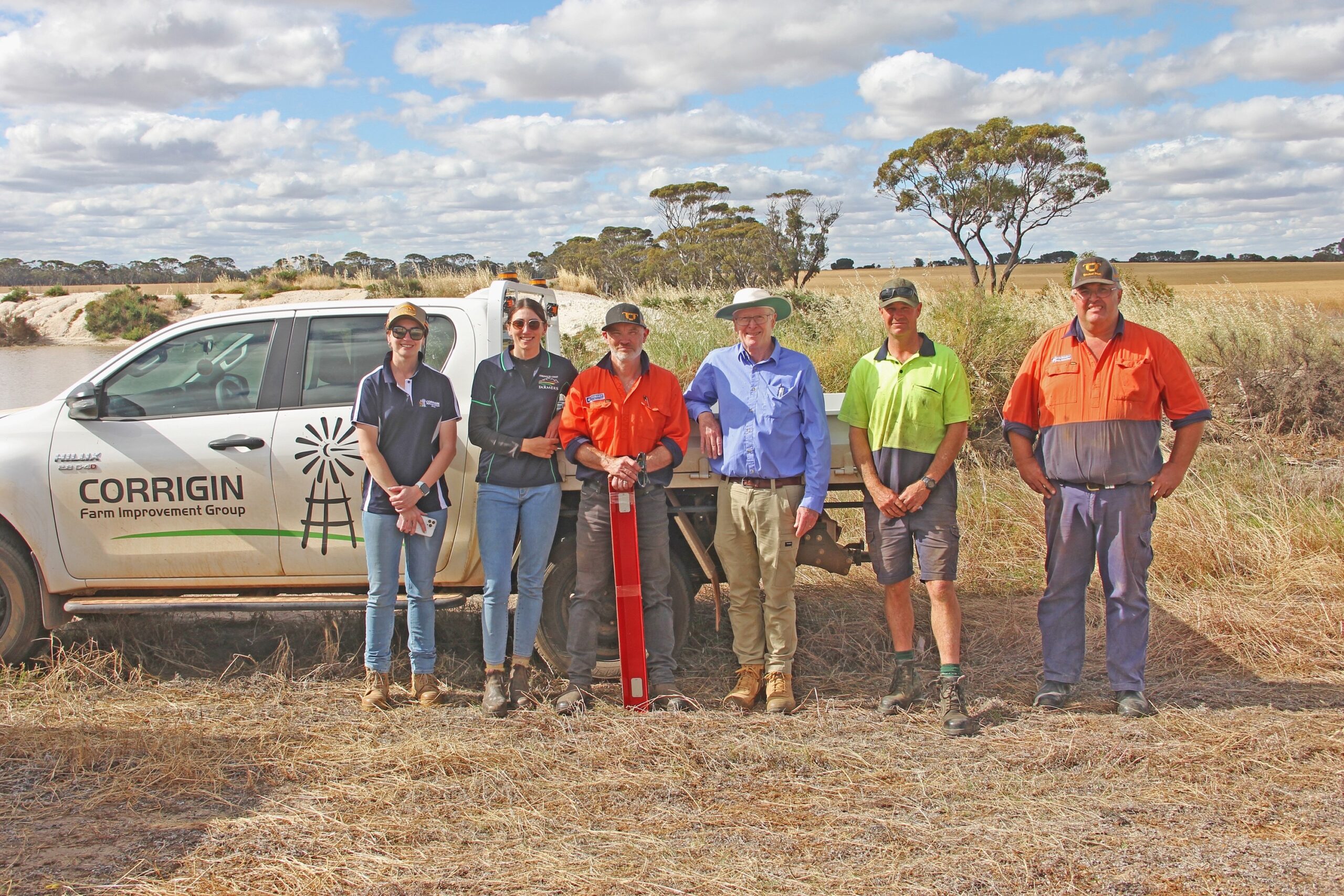Harvester Losses Project Update
Phase two of GRDC’s Harvest Losses announced
There will be a second successive year of measurements, following on from the 2021/22 measurements, designed to create a robust data set for harvest losses in two of the highest yielding cropping years in WA history.

L-R Veronika Crouch (CFIG), Sheridan Kowald (Stirlings to Coast), Peter Broley (Primary Sales), Glen Riethmuller (DPIRD), Clint Pitman (CFIG) and Michael Bailey (Primary Sales) at Clint Pitman’s property in Corrigin. Photo: DPIRD
Phase two of the Harvester Losses project to create comparative data
For a second successive year, GRDC has invested in the measurement of harvest losses in the western region to understand the optimum balance between harvester losses and operational efficiency to minimise grain losses and maximise profits.
Replicating the 2021/22 Harvest Losses project, these consecutive measurements will quantify the front and back harvest losses in nine grain crops in the Western Region.
The project will be conducted across at least 65 cropping paddocks from all five port zones in WA.
The GRDC Harvest Losses Report from 2020/21 suggested harvest losses in WA were up to $300M annually but vary significantly with crop type and where the losses occurred in the harvest setup.
GRDC Grower Relations Manager – West, Jo Wheeler, said the continued investment would help determine where grain losses occur, calculate the amount and cost of lost grain to growers, and identify solutions to improve harvest efficiency.
“Findings from last year’s project confirmed that measuring the grain thrown out of their harvesters is one of the single biggest things growers can do to put more profit in their pockets at harvest,” Ms Wheeler said.
“This project will measure front losses including data on front type, setup and any additions such as knife guards or air reels, and back losses with consideration to travel speed, rotor clearances, fan speed and sieve settings.
“Understanding these factors helps us to unpack the efficacy of existing solutions or settings for growers to reduce harvest their losses.”
The GRDC investment will build on the 2021/22 data and in the hope that the research findings will facilitate grower adoption of calibration software designed to mitigate losses three grower groups are being trained in the measurement process.
The LIEBE group, Corrigin Farm Improvement Group and Stirlings to Coast Farmers will collaborate on the project, undertaking the critical on-ground measurements.
Industry experts Ben White (Kondinin group) and Peter Broley (Primary Sales) are supplying on-site training for harvest-loss measurements and providing feedback to growers on their harvest configurations.
GGA Project Manager Daniel Kidd said growers would be able to use these findings to deduce where these losses occur and be able to calculate acceptable losses irrespective of varying yield.
“The data generated from this project will allow growers to benchmark their grain losses and understand where these losses are likely to occur for their particular harvester setup and by crop type,” Mr Kidd says.
Beyond the 2022/23 harvest season, growers will have access to locally generated harvest loss data from two of the highest yielding seasons on record for WA.
“This investment also supports industry experts like Mr White and Mr Broley to train grower group staff in the measurement of harvest losses, which gives them the skills needed to support their local growers to make improvements to their harvest setups going forward,” Mr Kidd says.
Results for the 2022/23 harvest will be available to grain growers in the Western Region by June 2023
The Harvest Losses Project data collected across two sequential seasons will inform a sister project, the harvester setup workshops team.
For questions about the project contact GGA’s Daniel Kidd.
